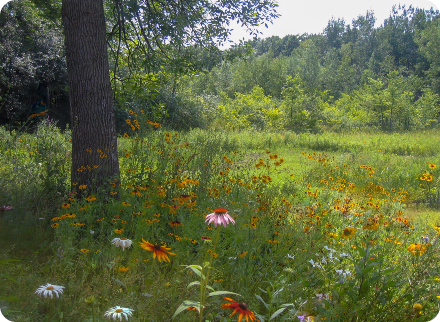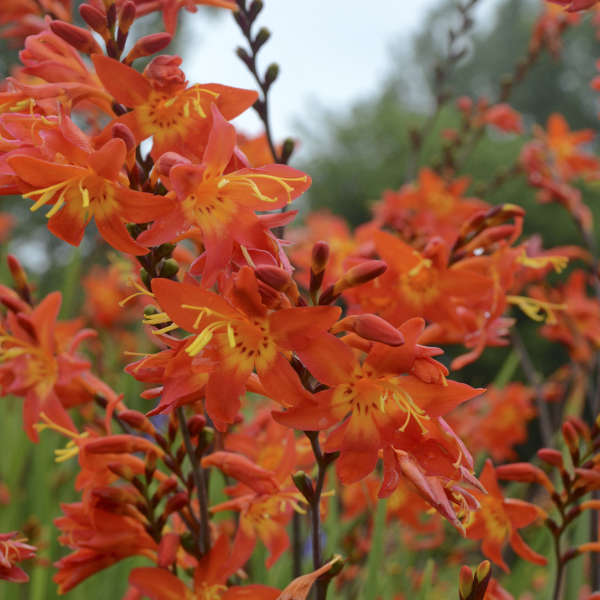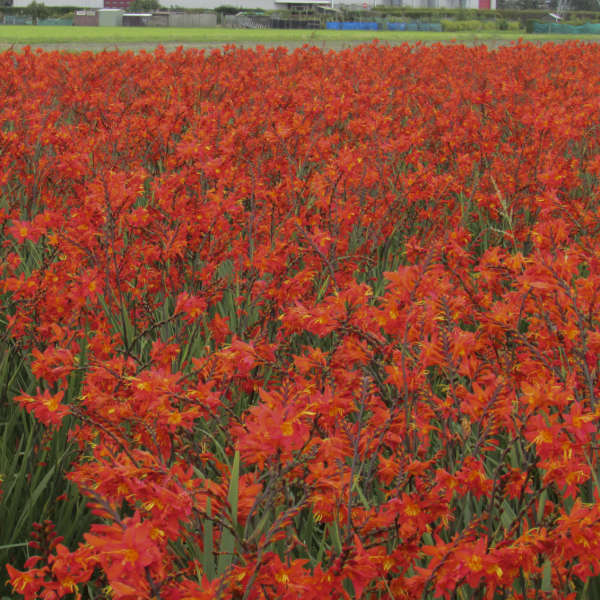- Advance Sale
1
/
of
2
Crocosmia 'Prince of Orange'
Crocosmia 'Prince of Orange'
 Yes!
This Item is Available
Yes!
This Item is Available
 Sorry!
This Item is not Available
Sorry!
This Item is not Available
Price:
$16.95
Price:
$33.90
Sale price
$16.95
Unit price
/
per
Couldn't load pickup availability
Ships in Spring 2025
View full details
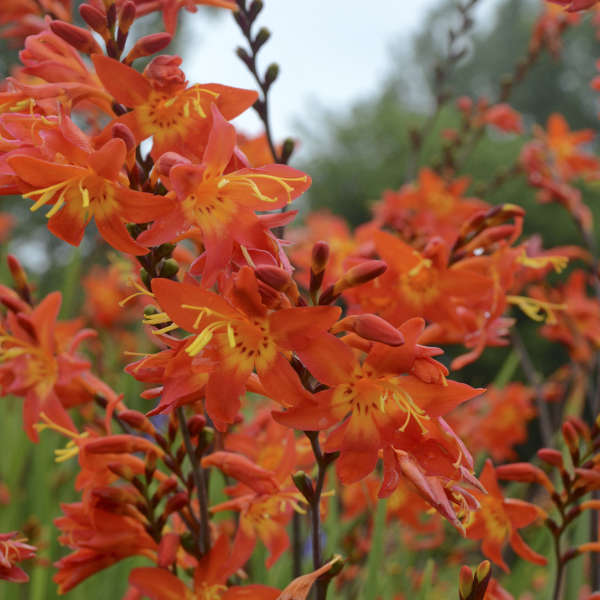
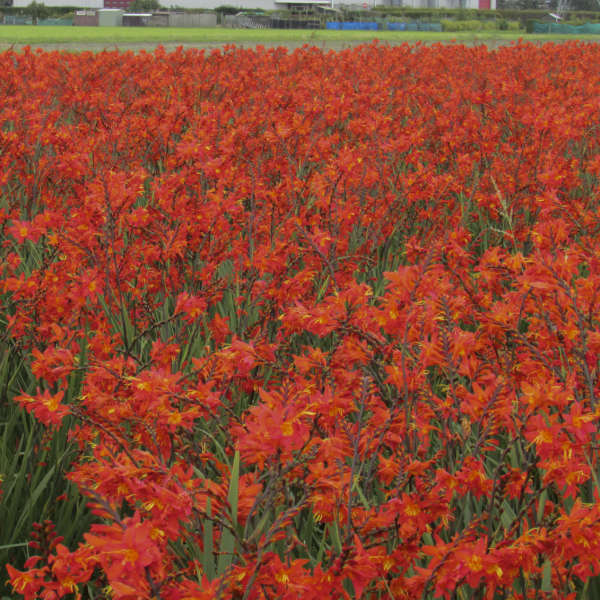
ADVANCE SALE - SHIPS SPRING 2025
Ships As: 3 Perennial Bare Root Bulb #1 Grade
Upright clump of dark green, sword-like foliage topped with arching stems of 20 or more vivid red-orange blossoms with a distinctive, burgundy speckled, gold center. The flowers are spaced very close together on the stems, resulting in a more concentrated blast of color from midsummer through late summer. The decorative seed pods that develop in fall are popular in dried flower arrangements. Crocosmia's broad, sword-like leaves are attractive even when the plants are not in bloom and, from a design standpoint, are effective for adding a spiky textured element to the landscape.
Height:
30-36 Inches
Spread:
20-24 Inches
Flower Color:
Orange Shades
Foliage Color:
Green shades
Hardiness Zone:
5,6,7,8,9
Sun or Shade?:
Full sun (> 6 hrs. direct sun)
Partial Shade (< 6 hrs. sun)
Wet or dry?:
Average water needs
Want to see wings?:
Attracts hummingbirds
Attracts butterflies
How fast should it grow?:
Medium
When should it bloom?:
Summer
How's your soil?:
Poor Soil
Average Soil
Fertile Soil
ATTRIBUTES:
Border plants
Cut flower or foliage
Mass Planting
Specimen or focal point
HOMEOWNER GROWING & MAINTENANCE TIPS:
Plant crocosmia in full sun and well-drained soil that does not become waterlogged. Its fleshy roots (corms) should be planted 2-4" deep and 6-8" apart. Crocosmia will quickly grow and overcrowd itself, and offsets of the original plant may be lifted and moved. In zones 1-5, corms should be lifted and stored indoors over the winter, much like cannas or dahlias. In zones 6-7, a deep winter mulch will help to protect the roots and increase the plant's chances of survival. No special treatment is necessary in zones 8-9.
Photo Courtesy of Walters Gardens, Inc.
PERENNIALS
What Are Perennials?
Technically, perennials are plants that live and bloom for more than 2 years. This is in contrast to annuals that live for one year and die. Some varieties of perennials are short-lived (lasting 3-4 years) but most have very long-life spans such as peonies which have been known to live 100 years or more! Perennials come in all shapes, sizes, and colors. The best thing about perennials is that you only have to plant them once and then they come back bigger and better every year. What a great investment! An important distinction between annuals and perennials is that most perennials need to be vernalized (exposed to cold temperatures for a prolonged period of time) in order to bloom every year. Most perennials bloom once per season, but some re-bloom again in late summer or fall. New advancements in hybridizing are expanding the population of perennials that bloom continuously for many months at a time. Other perennials, such as hostas and ferns, are grown for their decorative foliage rather than flowers.How Do I Use Perennials In My Garden?
There are lots of ways to use perennials in your yard, garden or landscaping. Mixing up the gardens is very popular by combining annuals with perennials, and woody plants. Single varieties of perennials are sometimes planted in large patches alongside a driveway or fence line. You can fill planters with a mix of annuals and perennials which has become increasingly common in modern landscapes. Of the many perennials available today, there is something for every growing environment: sun, shade, hot & dry, cold & wet, and everything else.How Do Your Perennials Come?
Our perennials come in three forms: bare roots, plant plugs or potted plants. You will find this information on each species pages. We select the form in which the plant will be shipped to you for specific reasons. Since the shipping of plants is a delicate matter and great care must be taken, we select each species by 2 criteria; what is better for that species performance wise i.e., better started as a bare root or plug or potted or what is better for that species shipping wise depending on growth rates of a particular variety. For example, we ship Columbines as plant plugs since they are just breaking dormancy and have small top growth as a plug vs. a more mature potted plant which is delicate and would get damaged during shipment. Baptisia, for example, is shipped as a bare root because they have more eyes, and are bigger and better when grown from a bare root than receiving one as a plug or potted plant etc. etc.What is a Bareroot, Plant Plug or Potted Plant
 A bare root is the root of a plant in a dormant state, and depending on the species, will have eyes or sprouts. It is a plant that is sold with the roots exposed, rather than potted in soil. Bare roots are healthy and usually grow quickly depending on the species. A plant plug is the general term for seedlings or rooted cuttings that have been started in trays of individual cells. Plant plugs have healthy root systems and can be dormant or breaking dormancy. Plugs and bare roots are the most economical way to purchase perennial plants. A potted plant is one that is usually in a 4-6" pot and is well on its way to growing. We rarely offer larger potted plants but those we do offer are those that need a head start, like hydrangeas or other bush-type plants because of their longer growth time.
A bare root is the root of a plant in a dormant state, and depending on the species, will have eyes or sprouts. It is a plant that is sold with the roots exposed, rather than potted in soil. Bare roots are healthy and usually grow quickly depending on the species. A plant plug is the general term for seedlings or rooted cuttings that have been started in trays of individual cells. Plant plugs have healthy root systems and can be dormant or breaking dormancy. Plugs and bare roots are the most economical way to purchase perennial plants. A potted plant is one that is usually in a 4-6" pot and is well on its way to growing. We rarely offer larger potted plants but those we do offer are those that need a head start, like hydrangeas or other bush-type plants because of their longer growth time. Our Commitment to You on Quality:
Vermont Wildflower Farm has a strong commitment to provide only the most healthy, vigorous stock to our customers. We are committed to only offering plants that our customers will be successful with. We have built our reputation by offering a wide variety of items to choose from, only the finest quality, and we stand firmly behind our product. We offer superior customer service and we, like you, are gardeners too, so we won't sell you anything that does not meet our high standards and that we would not plant ourselves. In fact, all of our products are planted at our homes and our business. If something does not meet your expectations or does not grow, just call or e-mail us so we can assist you. We are also available 7 days a week to offer advice, answer questions or help you plan your gardens. Your success is our success!Perennial Growing Tips:
- Perennials are colorful flowers and vibrant foliage that come back year after year. You should decide what type of garden you want and where you wish to locate your garden, so you have the most effect and enjoyment. Your perennial plants should be provided as best you can with the right soil, light and water. In doing so you will enjoy a fairly maintenance-free area for years to come. - Prepare your garden soil in fall as soon as you would in the spring Dig and turn your soil at least 8 inches for perennial plants. Add nutrients to the soil if need be. You can do this by simply mixing in 3-4 inches of compost. - Plan your flower bed according to height with the taller flowers in the back and shorter in the front or plan individual groupings. - Ensure you have a season-long display by choosing varieties that bloom at different times. Most perennials bloom for just a few weeks. Example: Peonies in spring, tiger lilies during the summer, and purple coneflower in early autumn will ensure flowers all season. - Group your plants by their light and water requirements. Most perennials like at least six hours of sun each day. Some, like columbines, will tolerate shade. Plant drought-tolerant varieties, like candytuft and tickseed close to each other. Bellflowers and asters need regular water and could be grouped together etc. etc. - Leave enough space between plants to allow them to grow. Plant perennials at least as far apart as the plant's mature spread. If the tag doesn't show the spread, set your plants 18 to 24 inches apart. -Dig a hole for each plant as deep as the pot it came in and add a bit of fertilizer. Hold the plant loosely at its base, up-end the pot and slide out the plant. Gently spread the roots and set the plant in the hole, making sure that the top of the plant's root ball is not below the surface. -Fill in the hole and water the plant thoroughly to establish the roots. Applying mulch around the base of the plant will help to preserve moisture and discourage weeds.What To Do When My Shipment Arrives:
Arrival of Your Shipment • If you are unable to plant right away, we suggest the following: • Store your bare root or plug perennials for a short time at a temperature between 35- and 40-degrees Fahrenheit. A cool basement is perfect. • Open the boxes for good air circulation to discourage surface mold growth. (surface mold is not harmful to firm and otherwise healthy-looking roots and can be rinsed away prior to planting) • Many perennial varieties including berries may not have visible top growth when received. This does not mean the plants are dead. These cultivars emerge from root or tubers and are late to break dormancy. Rest assured, that just because there are no leaves or top growth, the roots are healthy and ready to be planted. Be patient. To assist in their breaking of dormancy, warmer night temperatures of 65-70 degrees will help. Once ready to plant your new perennials, make sure you take a few steps to ensure success: • Plant as soon as you can. Make sure you wait until all chance of freezing weather has passed. If it takes a bit longer in your area, let your perennials get some sun and keep moist. (Do not over water your perennials. Leave your bare roots in their package. If you notice the contents becoming dry, moisten with a spray bottle but do not soak the bag and packing material/soil. You can transplant your plugs if you need to into gallon size containers until you can get them outside. • Make sure you choose the right spot for your plant. • Plant according to tag instructions. • Make sure you follow moisture requirements for your new perennials. • Don't pull on any top growth when removing your perennials from their pots, you can damage the plant/stalk. • Make sure if you have specialized perennials, that you are following care guides for each species. • Make sure when planting your bare root perennials that they are planted in the proper direction (root ball at the bottom). Some don't care but others do! • Stake those plants that need it, like Delphiniums but try to avoid staking those that do not need it. • Make sure that for taller plants that you fill in some ground all summer growth to cover the areas once any particular perennial has passed its bloom time. • Many of our perennial plants bloom for very long periods. As always, if you have any questions, please just send us an e-mail or call us toll-free and one of our experts will be happy to answer your questions! If you wish your order shipped ahead of the scheduled time by zone/region, just let us know in the comments field at checkout that you wish your order shipped as soon as the products arrive in stock!BILLING FOR ADVANCE SALES
Your online order for bulbs/bareroots/perennials etc. will be charged to your credit card including shipping at the time of placing the order (advance sale) and the bulbs and/or perennials, bare roots will ship according to the shipping schedule on the guide pages. This is standard practice in the mail-order bulb business. It not only allows us to accurately project inventory but allows us to offer you huge discounts for pre-ordering. We fully guarantee all flower bulbs and perennial plants/bareroots under the same terms as our seed products.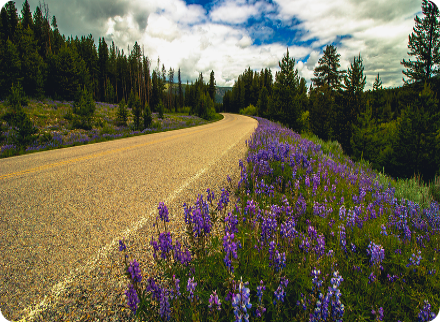
CUSTOM MIXES
We offer CUSTOM Seed Mixes for All Your Projects!
Best Pricing & Advice for Commercial projects
We've got you COVERED for Landscape
Management, Conservation & More!

